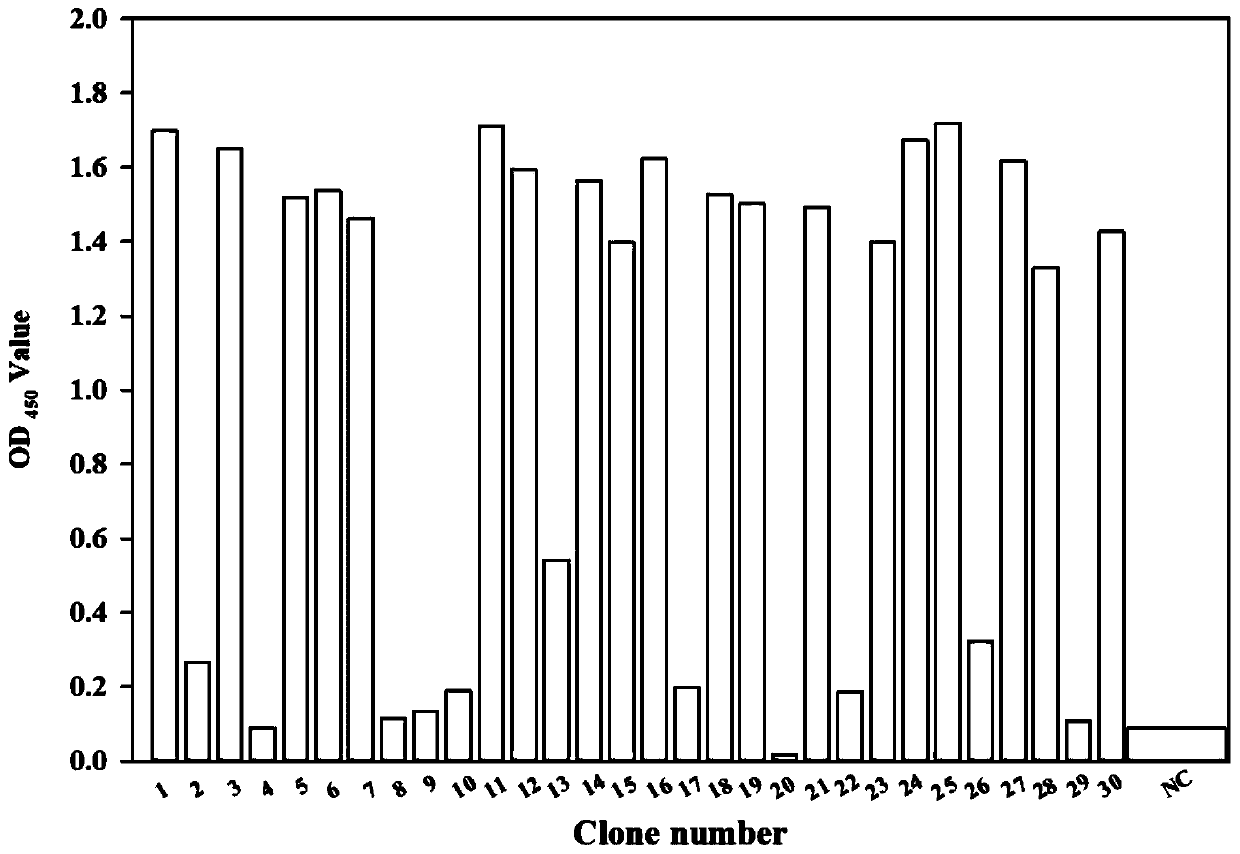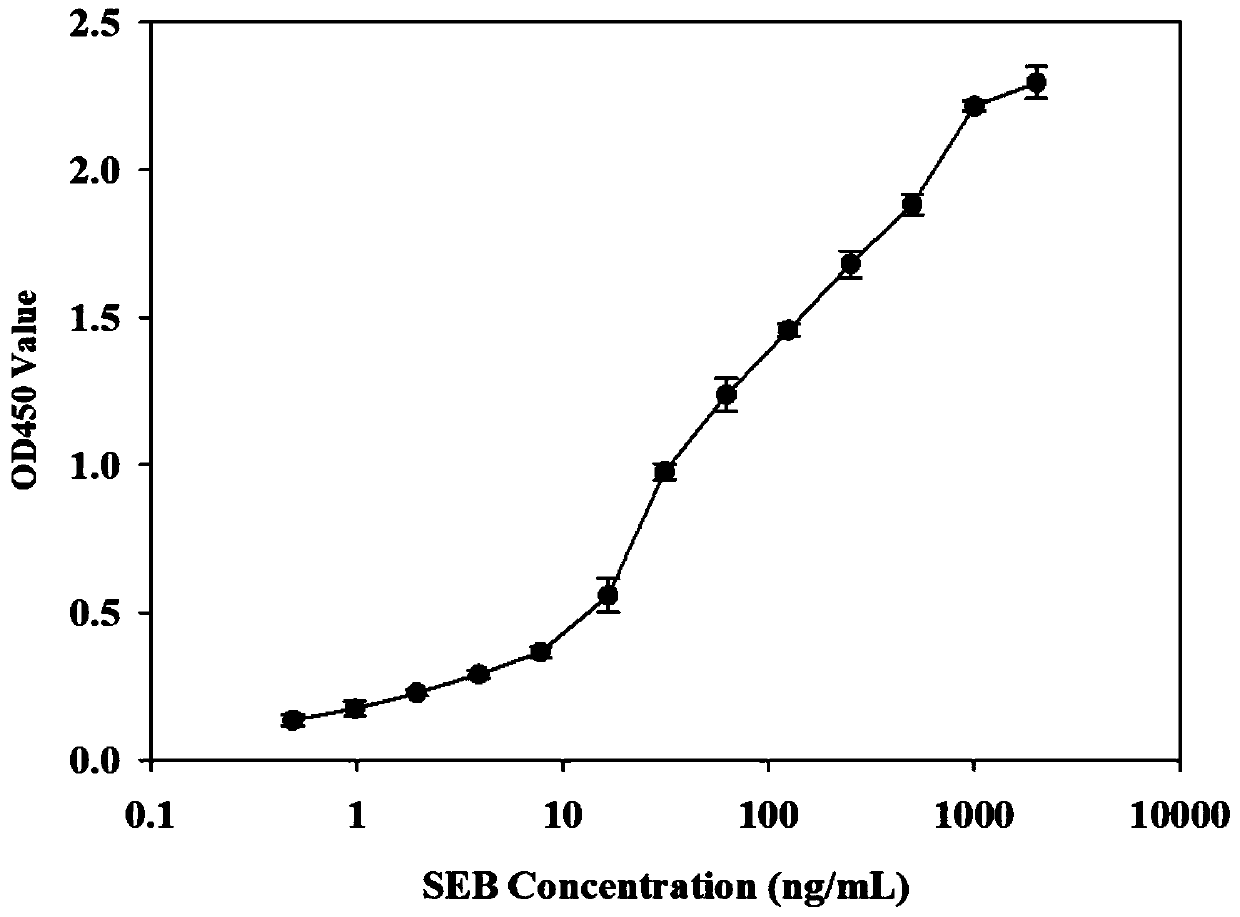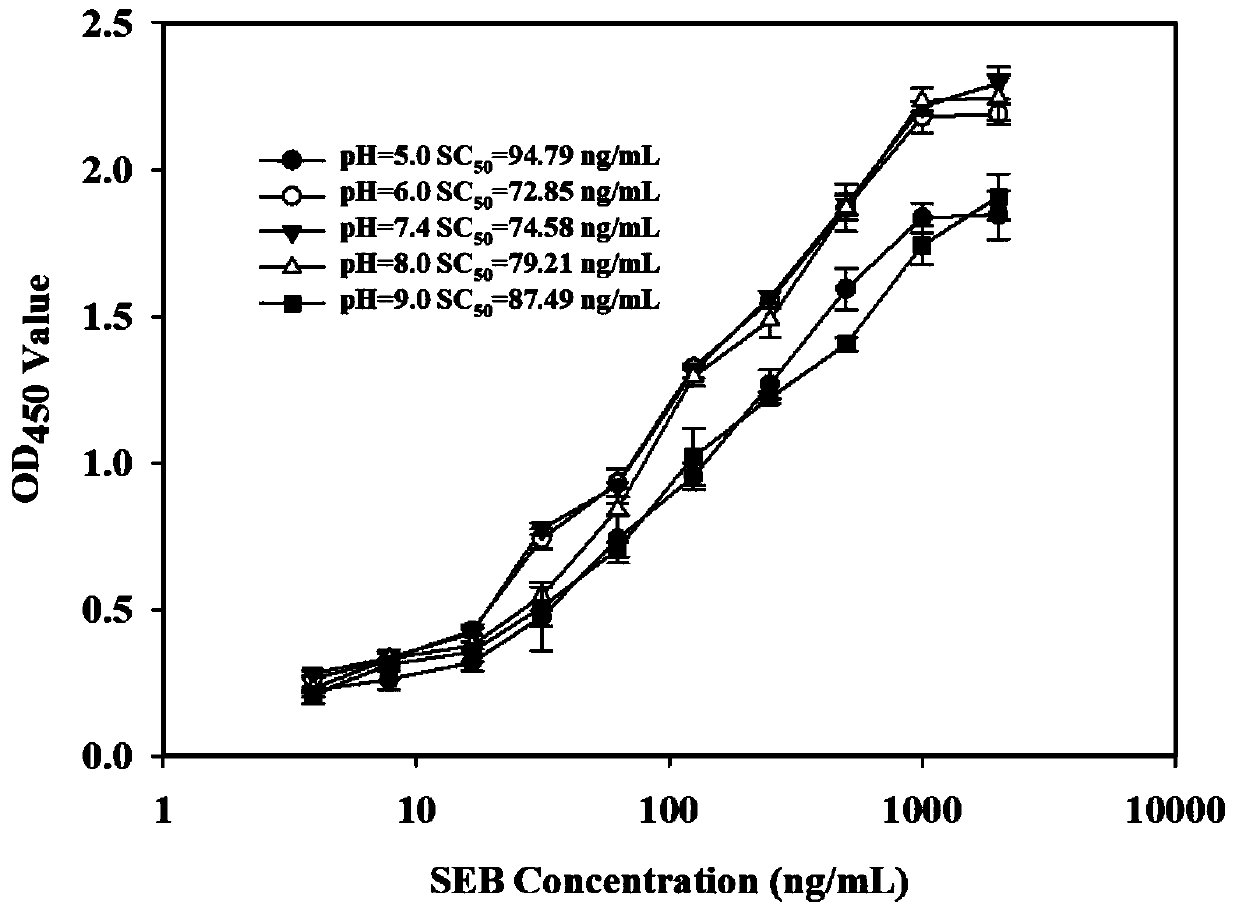Staphylococcal enterotoxin B nano antibody B1, application thereof and kit
A staphylococcus enteric and nano-antibody technology, applied in the biological field, can solve the problems of high cost of detection methods, poor antibody specificity, complicated operation, etc., and achieve the effect of small relative molecular weight, high specificity, and wide application
- Summary
- Abstract
- Description
- Claims
- Application Information
AI Technical Summary
Problems solved by technology
Method used
Image
Examples
Embodiment 1
[0042] Example 1, Construction of camel-derived nanobody phage display library
[0043] 1) Immunity of Bactrian camels
[0044] Adult male Alxa Bactrian camels were immunized by subcutaneous multipoint injection with SEB as the immunogen, and five rounds of immunization were carried out. For the first immunization, Freund's complete adjuvant (Freund's complete adjuvant) was used to emulsify with an equal volume of immune antigen and then injected, and the immunization dose was 100 μg per mouse. Thereafter, booster immunization was performed every two weeks, and injected with Freund's incomplete adjuvant (Freund's incomplete adjuvant) and an equal volume of immunogen after emulsification. On the seventh day after the fifth booster immunization, the peripheral blood of Bactrian camels was collected to construct a nanobody phage display library.
[0045] 2) Separation of lymphocytes
[0046] Seven days after the last immunization, 200 mL of peripheral blood was collected with ...
Embodiment 2
[0085] Example 2: Affinity panning of Nanobodies and their identification
[0086] 1) Affinity panning of Nanobodies: First, SEB was diluted with PBS (pH 7.4) to a final concentration of 50 μg / mL, and coated overnight at 4°C. The next day, after washing 5 times with PBST (10 mM PBS, 0.1% Tween-20 (v / v)), 5% BSA-PBS (or 5% OVA-PBS) was added to block for 1 hour at 37°C. Then wash 6 times with PBST, add 100 μL camel-derived single domain heavy chain antibody library (titer about 2.0×10 11 cfu), incubated at 37°C for 2 hours. Unbound phages were discarded, washed 10 times with PBST, added 100 μL of Glycine-HCl (0.2M, pH 2.2) to elute for 8 min, and immediately neutralized with 15 μL of Tris-HCl (1M, pH 9.1). Take 10 μL of the eluted phage to determine the titer, and the rest is used to infect 25 mL of the E.coli TG1 strain grown to the logarithmic phase for amplification. On the third day, the amplified phage was precipitated with PEG / NaCl, and the titer of the phage was deter...
Embodiment 3
[0089] Example 3: Sequencing of Nanobody Encoding Gene and Determination of its Amino Acid Sequence
[0090] The B1 clone is subjected to DNA sequencing, and the amino acid sequence of the nanobody can be obtained according to the DNA sequencing result and the codon table.
PUM
 Login to View More
Login to View More Abstract
Description
Claims
Application Information
 Login to View More
Login to View More - R&D
- Intellectual Property
- Life Sciences
- Materials
- Tech Scout
- Unparalleled Data Quality
- Higher Quality Content
- 60% Fewer Hallucinations
Browse by: Latest US Patents, China's latest patents, Technical Efficacy Thesaurus, Application Domain, Technology Topic, Popular Technical Reports.
© 2025 PatSnap. All rights reserved.Legal|Privacy policy|Modern Slavery Act Transparency Statement|Sitemap|About US| Contact US: help@patsnap.com



